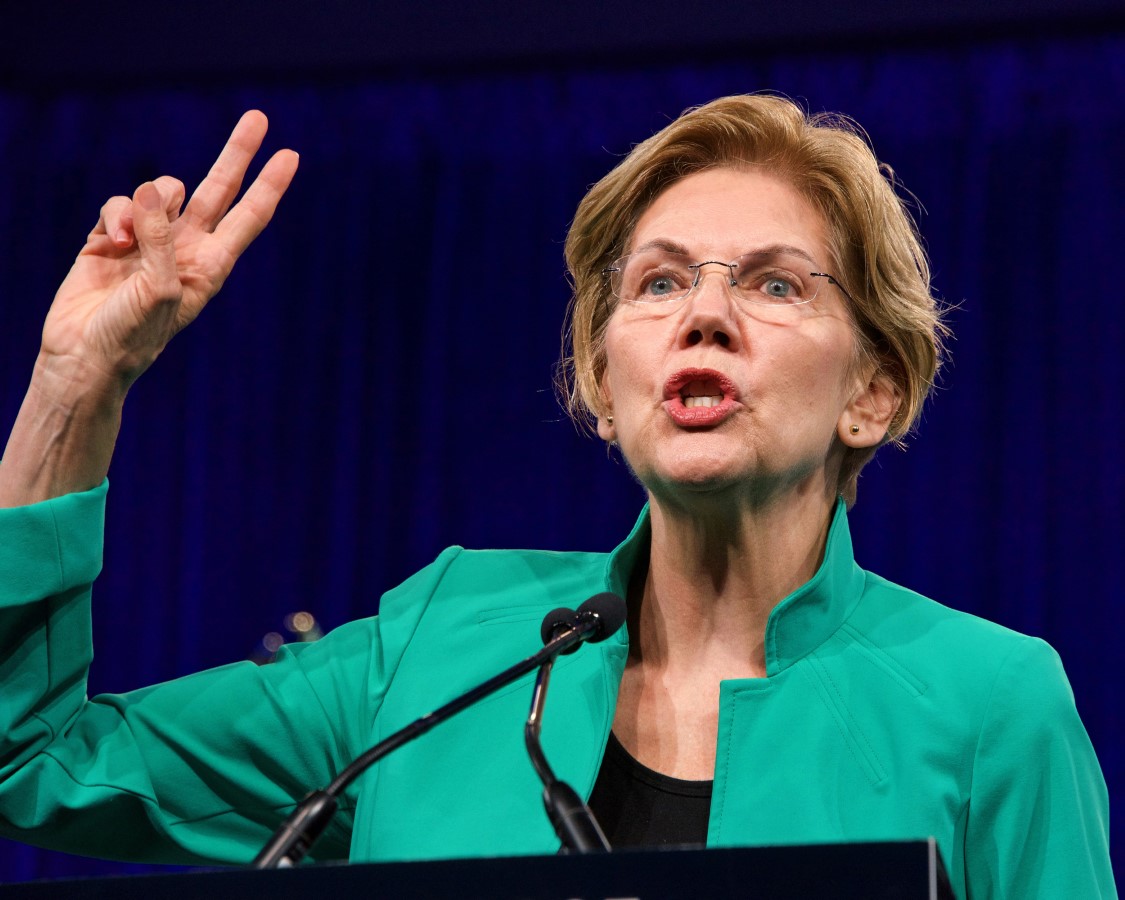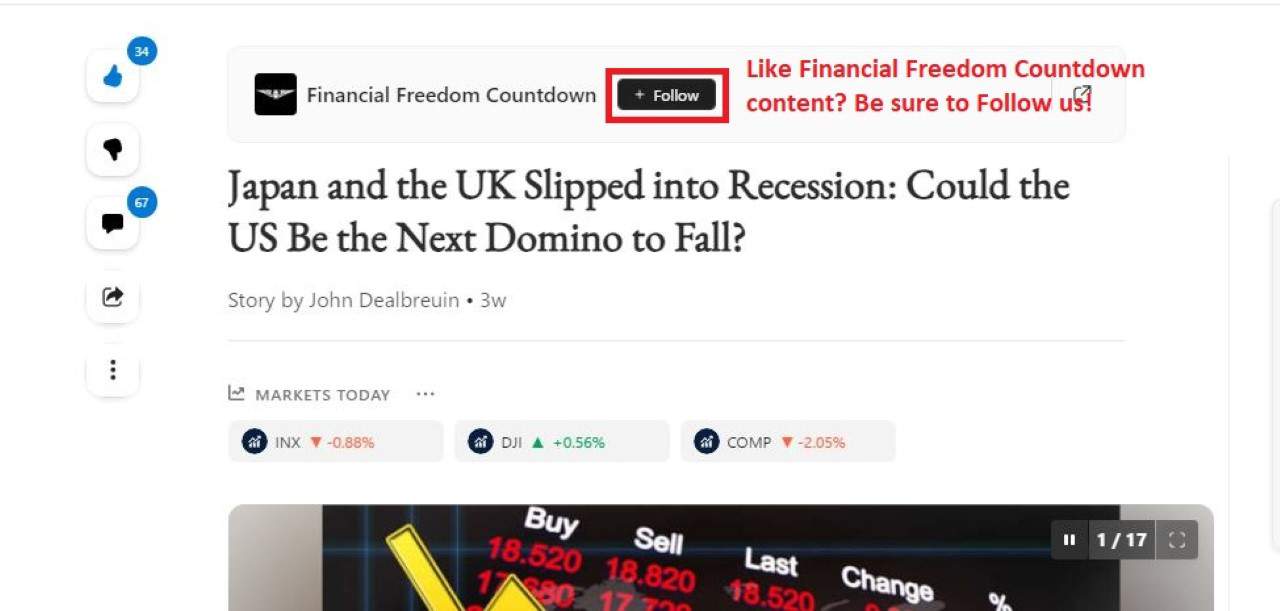Warren Pushes For Tax Breaks On Student Loan Forgiveness As Borrowers Start Getting Relief – Financial Freedom Countdown
Student loan forgiveness has resumed after months of uncertainty, but a new problem could be waiting around the corner.
A tax provision that currently makes forgiven student debt tax-free is set to expire next year; potentially turning long-awaited relief into an unexpected financial hit.
Millions of borrowers celebrating debt cancellation could find themselves owing thousands in new taxes unless the Treasury Department steps in to act.
Warren Leads the Charge to Keep Forgiveness Tax-Free

Senator Elizabeth Warren and a group of Democratic lawmakers are pressing the Treasury Department and the IRS to extend the current tax break for student loan forgiveness.
In a letter to Treasury Secretary Scott Bessent, Warren urged the administration to prevent what she called an unfair burden on working-class Americans. “By punishing borrowers with massive tax bills, the federal government undermines the very purpose of income-driven repayment,” the letter said.
The 2021 Tax Provision That Made Forgiveness Possible

Under the American Rescue Plan Act of 2021, student loan forgiveness was made temporarily tax-free through 2025. That change ensured borrowers wouldn’t have to treat canceled debt as taxable income; a major shift from past IRS rules.
Unless the provision is extended, however, borrowers whose loans are forgiven after January 1, 2026, could face a surprise bill from the IRS.
How Big Could the Tax Hit Be?

Advocacy group Protect Borrowers estimates that those receiving typical forgiveness amounts under income-driven repayment plans could owe between $5,800 and $10,000 in new federal taxes.
For many, that would effectively erase the benefit of years of careful repayment under programs meant to make student debt manageable.
Why It Matters Now

The timing is critical. Borrowers enrolled in income-driven repayment (IDR) plans; who make payments based on their income for 20 or 25 years; are just now reaching the point where they qualify for forgiveness.
That means many borrowers will hit the forgiveness milestone in 2025 or 2026, precisely when the current tax-free window closes.
Warren’s Legal Argument: The “General Welfare” Clause

Warren’s letter points to a potential workaround already within the administration’s reach.
She argues that the IRS could classify debt relief under IDR plans as general welfare payments, which are typically excluded from income tax.
Because income-driven repayment is based on demonstrated financial need, she says, forgiveness should qualify as a benefit promoting the borrower’s “general welfare.”
Why Warren’s Request Is a Big Ask

Under normal tax rules, most forgiven debt is treated as taxable income; whether it’s a credit card, auto loan, or mortgage that’s canceled.
The IRS assumes that when a lender forgives what you owe, it’s equivalent to you having received that money and choosing not to repay it.
The 2021 exemption for student loans was a rare and temporary exception. It recognized the lockdown-era hardship and was designed to prevent borrowers from facing an immediate tax bill after years of repayment.
If that exemption expires, student loan forgiveness would once again be treated like any other canceled debt; taxable under federal law.
That’s why Warren’s push for a permanent exemption is considered a major policy reach, one that could cost the Treasury billions in future revenue.
Borrowers Already Receiving Relief

The call for action follows the Trump administration’s decision to resume forgiveness earlier this fall for borrowers in income-based repayment programs.
After a months-long pause in processing, the Department of Education began canceling debts again for those who had completed the required number of payments.
For some, it marked the end of a repayment journey that began decades ago.
A Timing Loophole Could Protect Some Borrowers

There’s one technical detail offering a bit of hope. The Department of Education said that the effective date of forgiveness; not the date paperwork is processed will determine tax status.
That means if a borrower reaches their forgiveness milestone in 2025, their cancellation could still qualify as tax-free even if processing drags into early 2026.
Lawsuit Pressure Speeds Up Processing

The administration has faced legal pressure to act faster on forgiveness applications.
The American Federation of Teachers (AFT) reached a settlement earlier this year after suing the Department of Education for delays in reviewing income-driven repayment paperwork.
Under the agreement, the department pledged to accelerate approvals; a move that could ensure more borrowers are forgiven before the 2025 tax break expires.
Silence from Treasury on What Comes Next

So far, neither the Treasury Department nor the White House has said whether they plan to use their authority to extend the tax exemption.
Without clarity, borrowers remain uncertain whether they’ll face an unexpected tax bill on debt relief that was supposed to give them a clean slate.
What Borrowers Can Do in the Meantime

Experts say borrowers should closely track their forgiveness status and the effective date listed on any discharge notice.
Those approaching forgiveness by late 2025 may want to contact their servicer to confirm eligibility and ensure their paperwork is complete before the exemption deadline.
If the tax break expires, borrowers might need to plan for a potential increase in taxable income during the year their loans are forgiven.
The Political Stakes of Student Debt Relief

The debate over student loan forgiveness continues to shape the political landscape heading into 2026. For Democrats like Warren, protecting borrowers from new taxes reinforces a message of economic fairness.
For Republicans, the issue raises questions about federal overreach and fiscal responsibility.
With both sides framing the argument in moral and financial terms, the tax provision could become a high-profile policy fight in the coming months.
Student Loan Forgiveness Is Flowing Again

Student loan forgiveness is once again providing long-awaited relief; but unless Washington acts, next year’s tax code could turn that victory into a setback.
For now, Warren’s demand to make student loan forgiveness permanently tax-free stands as one of the boldest fiscal asks on the table; and one that would carve student debt relief out from every other type of forgiven debt in U.S. tax law.
Like Financial Freedom Countdown content? Be sure to follow us!
Trump Floats $2,000 ‘Tariff Dividend’ for Americans But Treasury Downplays Talk of Actual Checks

President Donald Trump’s latest social media announcement; a promise to send Americans a $2,000 “dividend” from tariff revenues has generated both excitement and uncertainty. In a Sunday post on Truth Social, Trump declared that a dividend of “at least $2000 a person (not including high income people!)” would be paid to everyone, funded by the trillions in tariff revenue his administration says it’s collecting. But Treasury Secretary Scott Bessent quickly clarified that Americans might not actually see checks in the mail. Instead, he hinted that the so-called “dividend” could come through existing tax cuts and deductions already signed into law.
Trump Floats $2,000 ‘Tariff Dividend’ for Americans But Treasury Downplays Talk of Actual Checks
Treasury Hikes I Bond Rate to 4.03%, Yet Fixed Portion Drops — Here’s What It Means for Savers

The U.S. Treasury has announced a new 4.03% rate for Series I savings bonds, slightly higher than the previous 3.98%. But beneath the bump lies a subtle setback: the fixed-rate portion has slipped to 0.9% from 1.1%. That quiet change could reduce long-term returns for investors hoping to lock in inflation-protected income, even as I bonds remain one of the safest options for conservative savers.
Treasury Hikes I Bond Rate to 4.03%, Yet Fixed Portion Drops — Here’s What It Means for Savers
Why Many Seniors Are Ditching Medicare Advantage for Medigap; Even With Higher Premiums

As Medicare open enrollment heats up, millions of seniors are facing one of the most consequential financial decisions of retirement: whether to stay with a Medicare Advantage plan or switch to a Medicare supplemental policy; better known as Medigap. The choice doesn’t just determine monthly costs; it can also affect access to doctors, treatment options, and out-of-pocket spending for years to come.
Why Many Seniors Are Ditching Medicare Advantage for Medigap; Even With Higher Premiums

The Social Security Administration announced that monthly benefits will increase by 2.8% in 2026, slightly above this year’s 2.5% cost-of-living adjustment (COLA). While the news might sound positive, many seniors say it’s far from enough to keep pace with the surging cost of everyday necessities.
Social Security’s 2.8% COLA Raise Could Be Wiped Out by Soaring Medicare Costs, Experts Warn

Did you find this article helpful? We’d love to hear your thoughts! Leave a comment with the box on the left-hand side of the screen and share your thoughts.
Also, do you want to stay up-to-date on our latest content?
1. Follow us by clicking the [+ Follow] button above,
2. Give the article a Thumbs Up on the top-left side of the screen.
3. And lastly, if you think this information would benefit your friends and family, don’t hesitate to share it with them!

John Dealbreuin came from a third world country to the US with only $1,000 not knowing anyone; guided by an immigrant dream. In 12 years, he achieved his retirement number.
He started Financial Freedom Countdown to help everyone think differently about their financial challenges and live their best lives. John resides in the San Francisco Bay Area enjoying nature trails and weight training.
Here are his recommended tools
Personal Capital: This is a free tool John uses to track his net worth on a regular basis and as a retirement planner. It also alerts him wrt hidden fees and has a budget tracker included.
Platforms like Yieldstreet provide investment options in art, legal, real estate, structured notes, venture capital, etc. They also have fixed-income portfolios spread across multiple asset classes with a single investment with low minimums of $10,000.